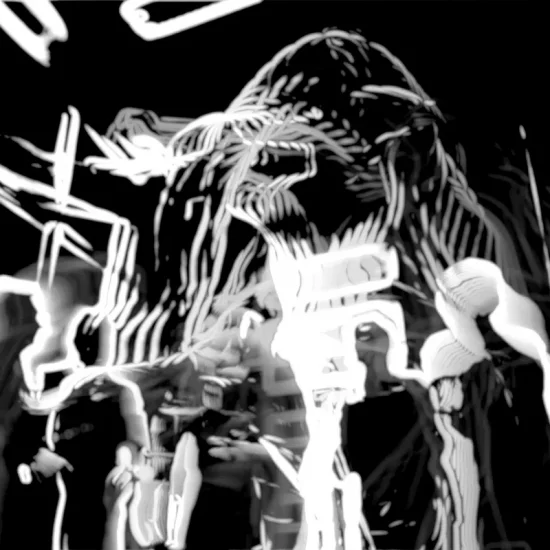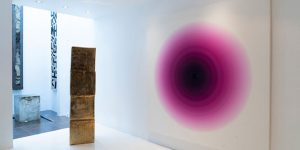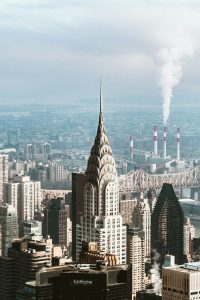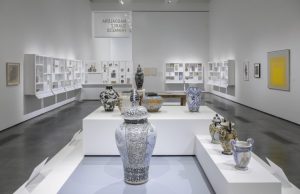A Journey Through Diverse Academic Landscapes
Vasco Diogo’s path to becoming a full-time artist is far from conventional. Unlike many artists who follow a traditional fine arts education, Diogo pursued a degree in Sociology, where he conducted his final research on Portuguese cinema. His academic journey continued with a master’s degree in Social Sciences, focusing on aesthetics and ideology in Portuguese comedy films from the 1930s and 1940s, and a PhD in Communication Sciences, examining video art and experimental cinema. These studies not only enriched his understanding of art but also provided a unique theoretical foundation that profoundly influences his work.
During his time at university, Diogo engaged in theatrical activities with the Teatro Universitário de Lisboa and Grupo de Teatro da Nova. These experiences significantly shaped his approach as a performer and contributed to his multidisciplinary artistic style. Additionally, his attendance at the School of Cinema in Lisbon further honed his skills and solidified his interest in the intersection of various art forms. Diogo’s early fascination with drawing has also left a lasting impact on his artistic creations, particularly in experimental animation and multimedia performance. His academic background and practical experiences converge to create a distinctive, scientific, yet intuitive approach to art.
Vasco Diogo: From Theatrical Beginnings to Cinematic Exploration
Vasco Diogo’s artistic journey began with a passion for drawing, theatre, and cinema. Inspired by the Nouvelle Vague movement, his early aspirations centered on filmmaking. However, his career initially took root in theatre, where he worked as an actor and co-creator at Projecto Teatral. This collective focused on blending theatre with installation art, allowing Diogo to explore the contamination of mediums—a concept that remains central to his work today. His first films were deeply influenced by his theatre and performance practice, reflecting a seamless integration of these disciplines.
Diogo’s transition to experimental cinema and video art marked a significant shift in his career. The theoretical insights gained from his PhD research played a crucial role in shaping his approach to these mediums. His work is characterized by a do-it-yourself spirit, embracing avant-garde and experimental techniques without fear of venturing into uncharted territories. This fearless experimentation extends to his recent forays into poetry, electronic music, and sound art. Throughout his journey, Diogo has consistently pushed the boundaries of artistic expression, driven by an unwavering commitment to innovation and exploration.
Exploring Identity and Perception Through a Unique Artistic Lens
Vasco Diogo’s artistic style is a dynamic amalgamation of primitivism, art brut, surrealism, and conceptual art. These influences are often interwoven with irony and humor, creating a distinctive voice that challenges traditional norms. Diogo’s work frequently delves into themes of identity, truth, and manipulation, prompting viewers to confront their perceptions and assumptions. By destabilizing conventional viewpoints, he invites audiences to engage in a deeper exploration of self-awareness and the nature of reality.
One of the core elements of Diogo’s work is his interest in the relationship between perception and improvisation. His art is not only a visual experience but also an intellectual and spiritual journey. Diogo’s pieces often reflect his internal visions and insights, aiming to provoke thought and inspire personal growth. His ability to blend various styles and themes into a cohesive artistic expression demonstrates his versatility and depth as an artist. This multifaceted approach ensures that each work is a unique exploration of complex ideas and emotions.
Vasco Diogo: The Interplay of Mediums and the Significance of Space
Vasco Diogo’s workspace is a testament to his eclectic approach to art. Filled with electronic and digital elements, a small chroma studio, lighting, sound devices, cameras, as well as traditional materials like paper, ink, books, and old magazines, his studio reflects the diverse range of his artistic practice. Diogo views reading not as a distraction but as a vital component of his creative process, akin to meditation and introspection. This routine of daily work in his studio underscores his commitment to his craft and the importance of a dedicated creative space.
Diogo’s choice of medium is profoundly influenced by the temporal possibilities of video art and experimental cinema. He is fascinated by the plasticity of image and sound and the concept of derealization—an idea that challenges the boundaries between reality and illusion. His experiments with performance, drawing, painting, installation, poetry, experimental music, and sound art illustrate his belief in the importance of cross-disciplinary exploration. Diogo’s ability to transport ideas and emotions across different mediums ensures that his work remains fresh and innovative, continually pushing the limits of artistic expression.




